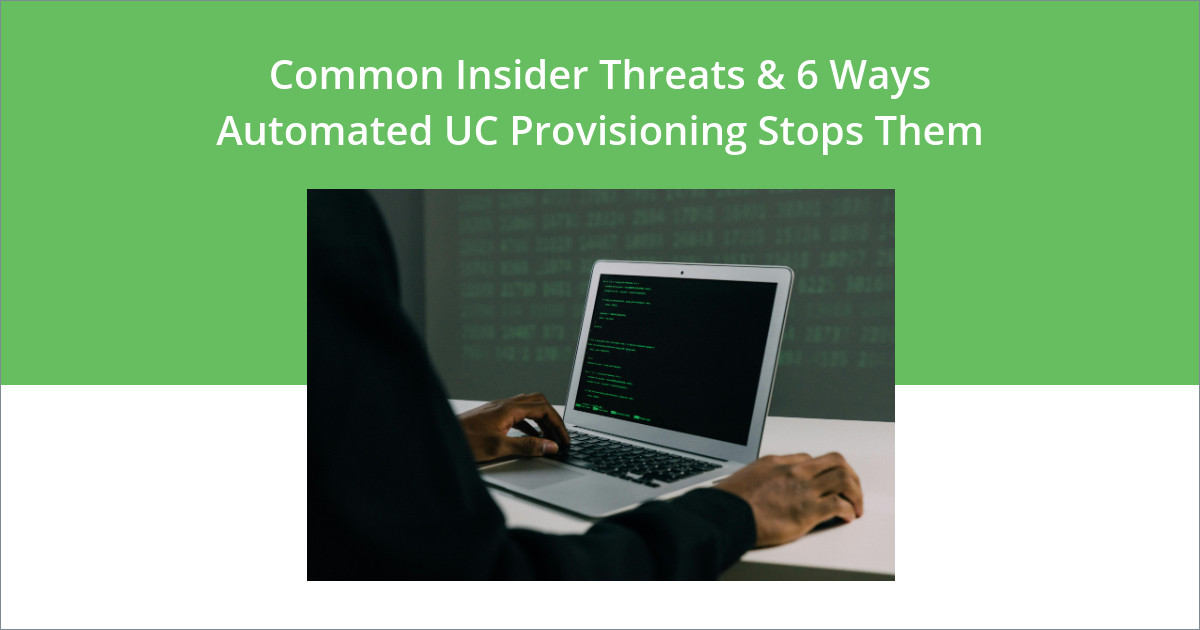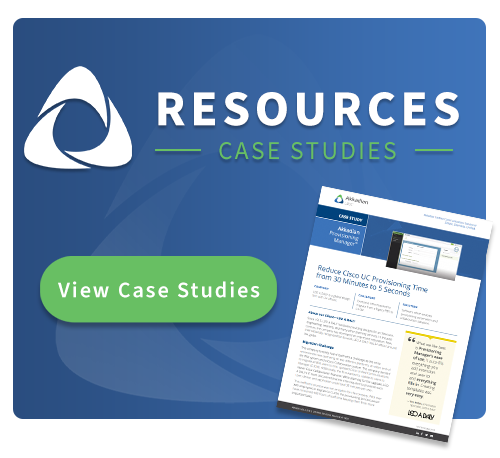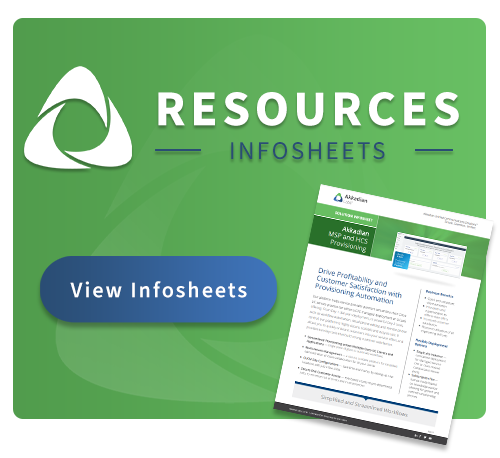When hackers attack from outside, alarms sound, and defenses activate. But insider threats? They move silently through your systems using legitimate access. These internal actors walk right past security checkpoints, creating blind spots your standard tools can’t see. If your company runs on manual provisioning, there’s little visibility into these threats until the damage is already done.
Automated UC provisioning builds a shield against insider threats by creating clear access boundaries, requiring proper approvals, and tracking every user action. This security triad stops potential exploits before your sensitive business data gets compromised.
This blog breaks down the most common insider threats targeting your UC systems and shows exactly how automated provisioning technology stops them cold.
Common Insider Threats in UC Environments
Your UC platforms store everything from confidential customer conversations to strategic planning and intellectual property. This trove makes them prime targets for insider exploitation.
Let’s review the most common threats you need to guard against.
Excessive Access Privileges
Employees collect access rights as they change roles or temporarily cover for colleagues. This “privilege creep” means a single compromised account can access far more than it should.
The issue is widespread—studies show that nearly 99% of users, roles, and resources in cloud environments have more permissions than they need[1] . Most retain outdated access from previous roles, creating a tangled web of permissions that directly violates security best practices and increases exposure to insider threats.
Delayed Access Termination
When an employee leaves the company, how fast is their access revoked? In many organizations with manual processes, the delay can be a week or more, especially for UC systems, which are often overlooked.
This window is an open invitation for data theft, system sabotage, or creating hidden backdoor access that stays active long after termination. Each day of continued access increases the likelihood of a major security risk, especially for employees who didn’t leave on good terms.
Unauthorized Privilege Escalation
Without proper boundaries, users can gain unauthorized system rights through admin accounts, shared passwords, or permission loopholes. These escalation attempts usually target the UC systems that control valuable communication data.
The real danger? In manual environments, unauthorized privilege can fly under the radar until sensitive data has already been compromised, because there’s no system tasked with reviewing suspicious permission changes.
Administrative Account Misuse
IT administrators have the master key to your systems. Without proper checks and balances, a single compromised admin account can cause widespread damage.
The risk goes far beyond simple data theft. Admins can alter system configurations to create persistent backdoors, disable security monitoring features, or take down critical communication services—all potentially undetected.
To stop these threats before they turn into recurring incidents, companies now turn to automated UC provision.
6 Ways Automated UC Provisioning Stops Insider Threats
#1: Enforces Role-Based Access Controls
Automated UC provisioning creates a perfect match between job roles and system access through role-based access. This approach ensures employees get exactly what they need—no more, no less—regardless of department or seniority.
When an employee changes roles, the system automatically updates their permissions, removing unnecessary access and adding required privileges based on pre-defined templates. This prevents the gradual buildup of permissions that accumulates throughout a career.
READ MORE: The 5 Must-Have Automation Features in a UC Provisioning Tool
#2: Implements Systematic Deprovisioning
By connecting your HR systems with your provisioning platform, access termination happens instantly when employment status changes. This integration triggers immediate deprovisioning across all UC systems at once, closing the security gap that manual processes leave wide open.
The system also creates detailed records showing exactly when access was revoked and which permissions were removed. This documentation helps satisfy compliance requirements and supports security investigations, should issues arise later.
#3: Establishes Multi-Level Authorization Requirements
Automated UC provisioning creates approval checkpoints that require proper sign-off before granting elevated privileges. For sensitive systems, you can require multiple approvals, creating real oversight for critical changes.
This prevents unauthorized privilege escalation by enforcing consistent governance throughout your organization. Every authorization generates system records showing who approved the change and when it happened for clear accountability.
#4: Creates Comprehensive Audit Trails
The system maintains detailed logs of all access-related activities across your UC environment, capturing:
- When access was granted or changed in each system
- Who authorized each permission change
- Exactly which permissions were affected
- When users accessed sensitive systems
- Any failed access attempts or policy violations
These detailed records give you the visibility to spot suspicious behavior that can indicate potential threats. Unlike manual documentation that can be incomplete or tampered with, system-generated logs provide reliable, gated evidence for investigations.
READ MORE: 5 Biggest UC Security Threats & How to Mitigate Them With Automated Provisioning
#5: Segments Administrative Functions
Automated UC provisioning enforces separation of duties, dividing administrative powers among different roles. This ensures no single administrator can make unauthorized changes without others detecting it.
The system requires multiple approvals for sensitive operations, implements time-limited administrative access, and tracks every action. These structured controls drastically reduce the risk of privileged account misuse.
#6: Enables Regular Access Certification
The system makes regular access reviews simple by generating clear reports of current user permissions across your entire UC environment. These reports help managers and security teams verify that access rights are appropriate and identify any unnecessary privileges that should be removed.
This systematic recertification process helps maintain proper access controls over time, preventing the gradual permission drift that surfaces in manual environments. These reviews also demonstrate due diligence when auditors inspect your access governance practices.
Conclusion
As organizations continue to pour resources into external security controls, they overlook the insider threats, which can be even more dangerous. Manual provisioning creates security gaps that insiders can easily exploit, and it limits visibility into potentially malicious activities.
Automated UC provisioning closes these vulnerabilities by implementing consistent access controls, enforcing proper authorization workflows, and keeping complete audit trails of all user activities. These capabilities stop the security gaps that enable insider threats while creating the documentation you need to demonstrate compliance.
Ready to strengthen your security? Akkadian Provisioning Manager offers the automation capabilities to protect your UC environment from insider threats while reducing IT workload. Schedule a demo to see how our platform can help your organization strengthen its security and improve overall operations.



